Speaker
Description
Alkylation and arylation on the purine ring usually proceeds almost selectively at N(9) position. While there are some simple pathways to introduce alkyl substituents at N(7) [1], the same is not true for introduction of aryl groups. The most commonly used Cu catalyzed Chan-Lam reaction [2] and arylation with iodanes [3] selectively give N(9) product. The few existing methods for purine N(7) arylation still provide a mixture of two isomers and are substrate dependent [4]. Hence, we decided to test various pathways towards 7-arylpurines starting from substituted pyrimidines.
We have achieved the best results with the following synthetic pathway starting from compound 1: arylation was performed using diaryliodane in the presence of Cu catalyst, giving 5-arylamino substituted pyrimidine 2. Next, in SNAr reaction under optimized conditions only one chlorine atom was substituted. Finally 7-arylpurine was obtained in a ring closing reaction with orthoester under acidic conditions. Modifications of starting material 1, diaryliodane reagent and ring closing reagent can be made to achieve differently substituted 7-arylpurines of type 4.

